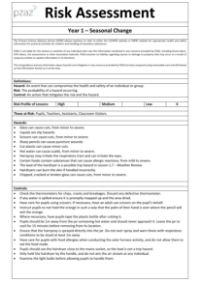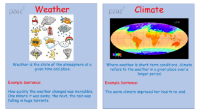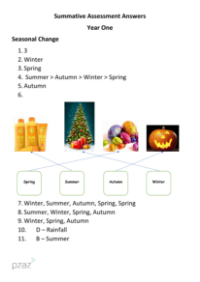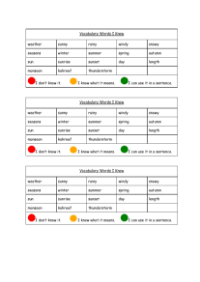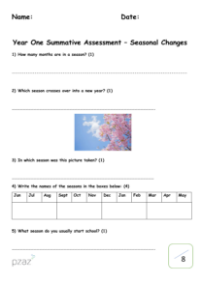Seasonal Change - Knowledge Organiser
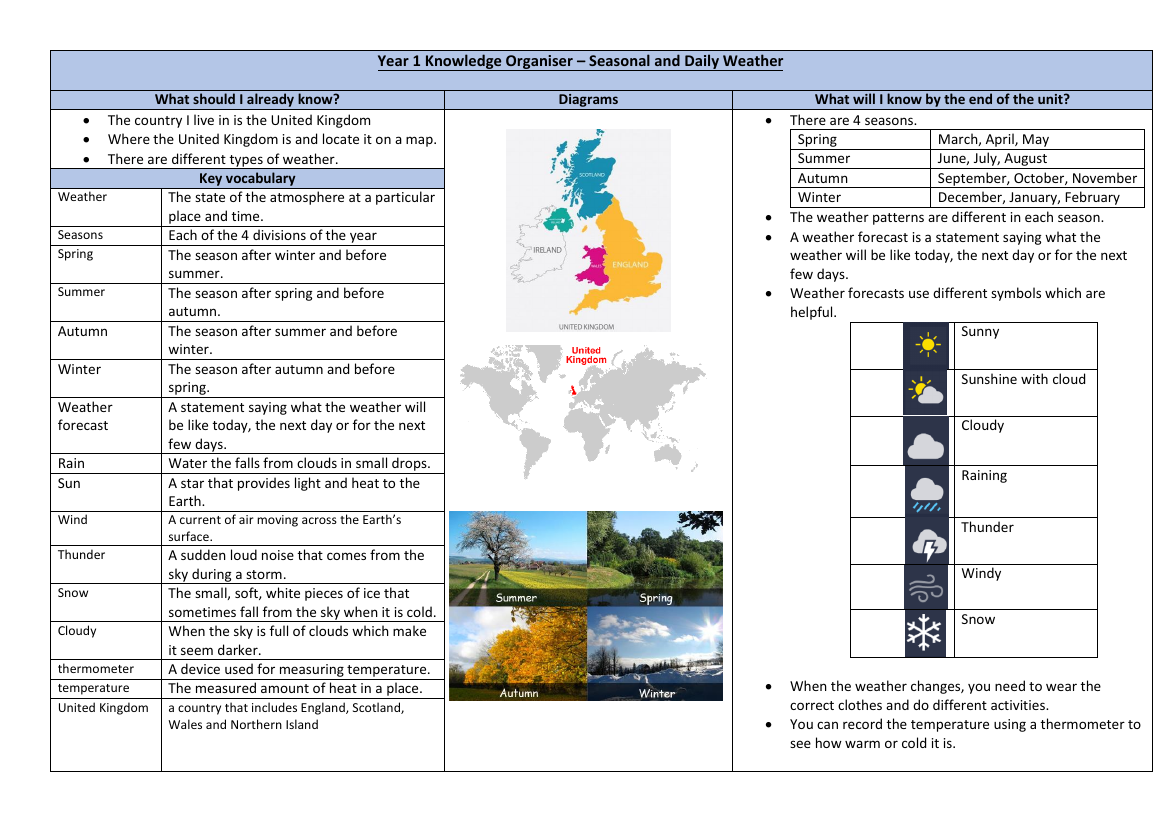
Science Resource Description
This Year 1 Knowledge Organiser is a comprehensive guide for children to understand seasonal and daily weather patterns. At the outset, pupils are expected to know that they live in the United Kingdom and be able to locate it on a map, as well as recognise that there are various types of weather and four distinct seasons. As they progress through the unit, they will learn the specific months associated with each season: Spring (March, April, May), Summer (June, July, August), Autumn (September, October, November), and Winter (December, January, February). The organiser details how weather patterns differ across these seasons and introduces the concept of a weather forecast, which predicts weather conditions for the current and upcoming days using specific symbols for sunny, cloudy, rainy, thunderous, windy, and snowy conditions.
Children will also discover the practical implications of weather changes, such as the need to wear appropriate clothing and engage in different activities. The importance of using a thermometer to measure temperature is highlighted, enabling them to discern how warm or cold it is. Key vocabulary terms like weather, seasons, weather forecast, rain, sun, wind, thunder, snow, cloudy, thermometer, temperature, and United Kingdom are defined to enhance their understanding. Through engaging questions, the organiser challenges students to recall the four seasons and their corresponding months, identify correct clothing for winter, and understand what information a weather forecast provides. They will also learn about the significance of the summer solstice (the longest day of the year) and the winter solstice (the shortest day of the year), as well as the equinoxes in spring and autumn when day and night are of equal length.

